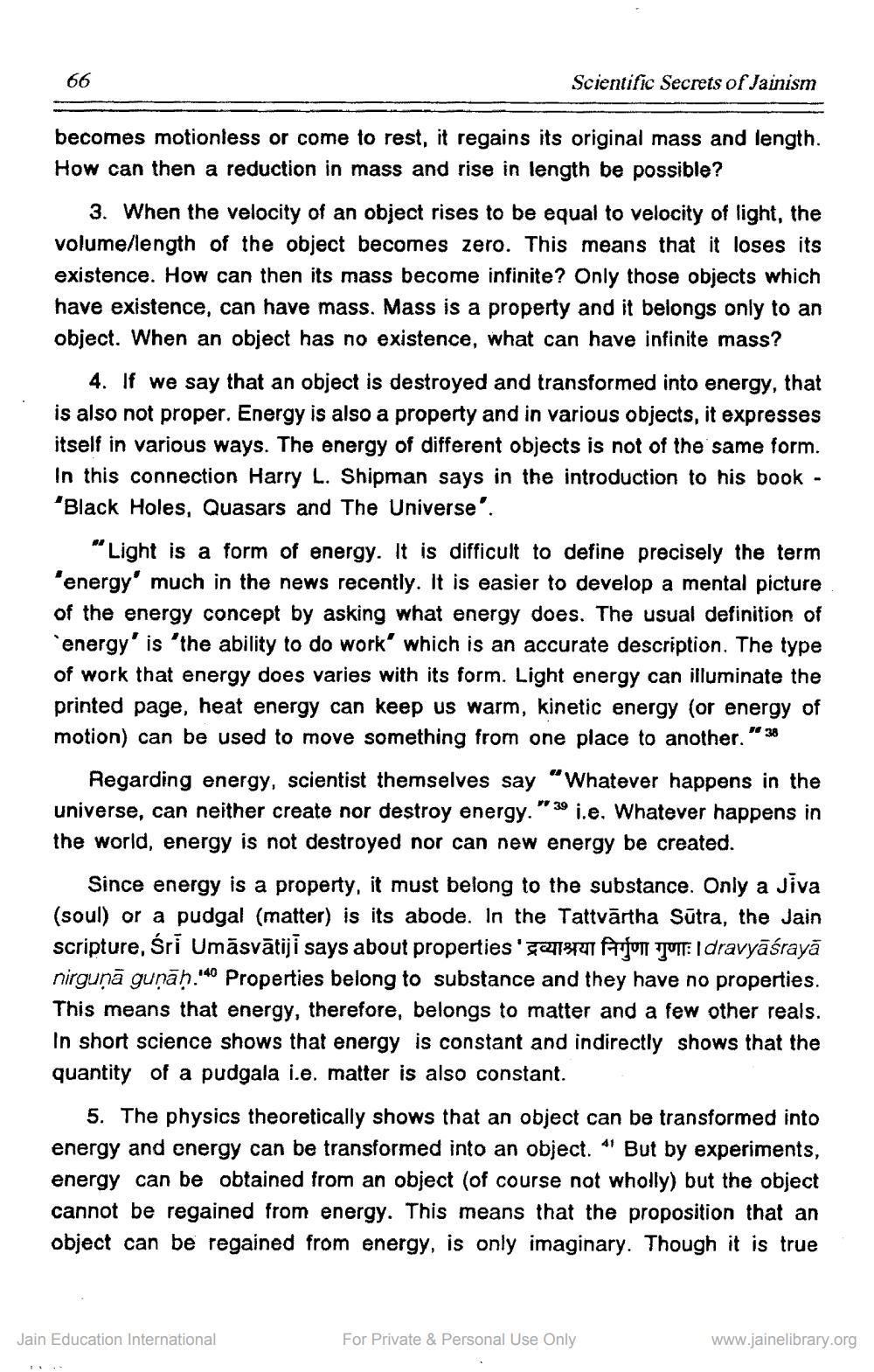________________
66
Scientific Secrets of Jainism
becomes motionless or come to rest, it regains its original mass and length. How can then a reduction in mass and rise in length be possible?
3. When the velocity of an object rises to be equal to velocity of light, the volume/length of the object becomes zero. This means that it loses its existence. How can then its mass become infinite? Only those objects which have existence, can have mass. Mass is a property and it belongs only to an object. When an object has no existence, what can have infinite mass?
4. If we say that an object is destroyed and transformed into energy, that is also not proper. Energy is also a property and in various objects, it expresses itself in various ways. The energy of different objects is not of the same form. In this connection Harry L. Shipman says in the introduction to his book "Black Holes, Quasars and The Universe'.
"Light is a form of energy. It is difficult to define precisely the term "energy" much in the news recently. It is easier to develop a mental picture of the energy concept by asking what energy does. The usual definition of `energy" is "the ability to do work" which is an accurate description. The type of work that energy does varies with its form. Light energy can illuminate the printed page, heat energy can keep us warm, kinetic energy (or energy of motion) can be used to move something from one place to another.
#38
Regarding energy, scientist themselves say universe, can neither create nor destroy energy. the world, energy is not destroyed nor can new energy be created.
-
"Whatever happens in the 39 i.e. Whatever happens in
Jain Education International
Since energy is a property, it must belong to the substance. Only a Jiva (soul) or a pudgal (matter) is its abode. In the Tattvartha Sutra, the Jain scripture, Śri Umāsvātiji says about properties' on you: Idravyāśrayā nirguņā guṇāḥ.40 Properties belong to substance and they have no properties. This means that energy, therefore, belongs to matter and a few other reals. In short science shows that energy is constant and indirectly shows that the quantity of a pudgala i.e. matter is also constant.
5. The physics theoretically shows that an object can be transformed into energy and energy can be transformed into an object. "But by experiments, energy can be obtained from an object (of course not wholly) but the object cannot be regained from energy. This means that the proposition that an object can be regained from energy, is only imaginary. Though it is true
For Private & Personal Use Only
www.jainelibrary.org




